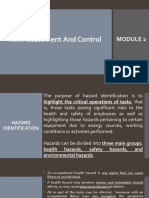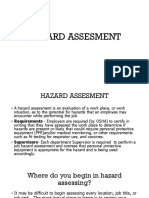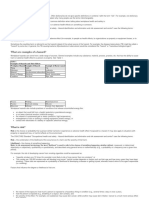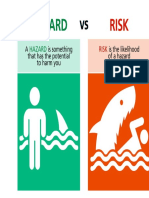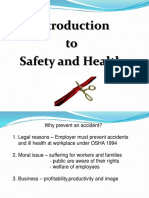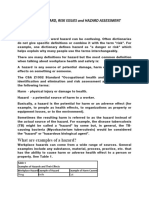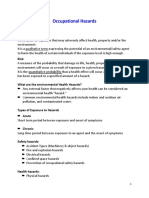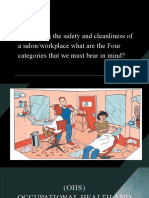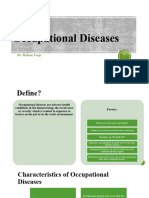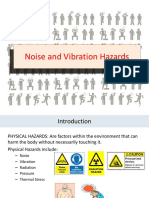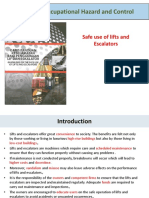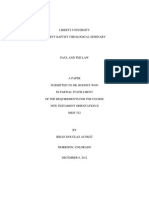0% found this document useful (0 votes)
76 views21 pagesMem603 Occupational Safety & Health: Chapter 4 Occupational Hazard and Control
This document outlines occupational hazards and controls in 12 sections. It discusses various industrial hazards including mechanical, electrical, noise, radiation, fire, chemical hazards. It defines hazard and risk, and notes that industrial safety aims to protect workers from industrial accidents. Various control methods are discussed including engineering controls to isolate hazards, administrative controls like training, and personal protective equipment as a last resort.
Uploaded by
Minho OnionsCopyright
© © All Rights Reserved
We take content rights seriously. If you suspect this is your content, claim it here.
Available Formats
Download as PDF, TXT or read online on Scribd
0% found this document useful (0 votes)
76 views21 pagesMem603 Occupational Safety & Health: Chapter 4 Occupational Hazard and Control
This document outlines occupational hazards and controls in 12 sections. It discusses various industrial hazards including mechanical, electrical, noise, radiation, fire, chemical hazards. It defines hazard and risk, and notes that industrial safety aims to protect workers from industrial accidents. Various control methods are discussed including engineering controls to isolate hazards, administrative controls like training, and personal protective equipment as a last resort.
Uploaded by
Minho OnionsCopyright
© © All Rights Reserved
We take content rights seriously. If you suspect this is your content, claim it here.
Available Formats
Download as PDF, TXT or read online on Scribd
/ 21












